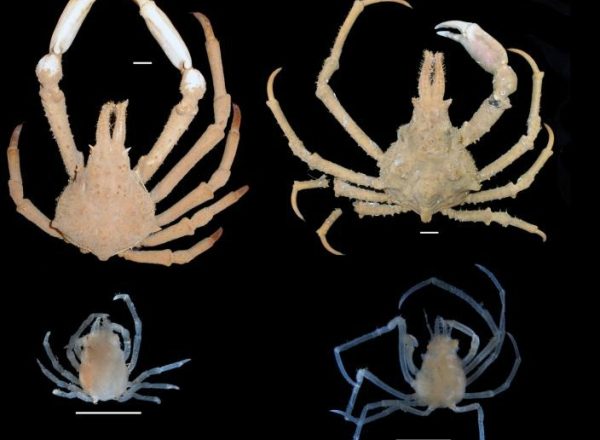A NEW species of spider crab has been named, more than 50 years after the first specimen was lodged at the Western Australian Museum.
![A comparison of large males of P. serpulifera (left) and P. keesingi (right) with representative juveniles found under the abdomens of females. [Credit: WA Museum]](http://teresabelcher.com/wp-content/uploads/2016/11/spidercrab-300x265.jpg)
After locating and examining 32 similar specimens amongst the WA Museum and Queensland Museum collections, and performing genetic testing, it was clear they belonged to a new species, says WA Museum curator of Crustacea and Worms, Andrew Hosie.
The crab was named Paranaxia keesingi, after CSIRO’s Dr John Keesing, in recognition of his contribution and commitment to the knowledge of WA biodiversity.
The earliest collected P. keesingi found in storage was collected in 1963 by Fremantle-based fishermen W. & W. Poole from Shark Bay.
Many specimens are in a similar situation—waiting for someone to take notice and characterise them—according to Mr Hosie.
“Describing new species and ensuring that they are not an already known species, can be incredibly slow and painstaking work, requiring great patience and attention to detail,” Mr Hosie says.
One of the main reasons for the long time a specimen may remain undescribed is lack of available expertise, as museums generally do not have a scientist dedicated to every single group of animal, he says.
“We have to rely on experts at other museums for this material to be examined, and we routinely send specimens out for identification,” he says.
“But if the priorities and funding of external experts don’t line up with ours, then it can take a very long time before they are even identified as a new species, let alone described, named and published.”
Secondly, Mr Hosie says specimens may not be suitable or there may not be enough information to describe them.
“If there is only one or a few specimens, or they are damaged, juvenile, only females, or only males—then naming and describing them may be postponed until there are enough specimens of suitable quality to provide a full description of the species,” he says.
Advancements in science also mean that species can now be distinguished at a genetic level to help tease apart ‘species complexes’ where there is a group of very similar looking species, Mr Hosie says.
“There are now new species described that were once considered regional variants or subspecies, but with the aid of genetic sequencing these are often shown to be distinct species.”
Notes
Paranaxia keesingi can be found as far south as the Houtman Abrolhos Islands and north into Indonesian waters off New Guinea as well as in northern Queensland and is recorded at depths of up to 175 metres.
